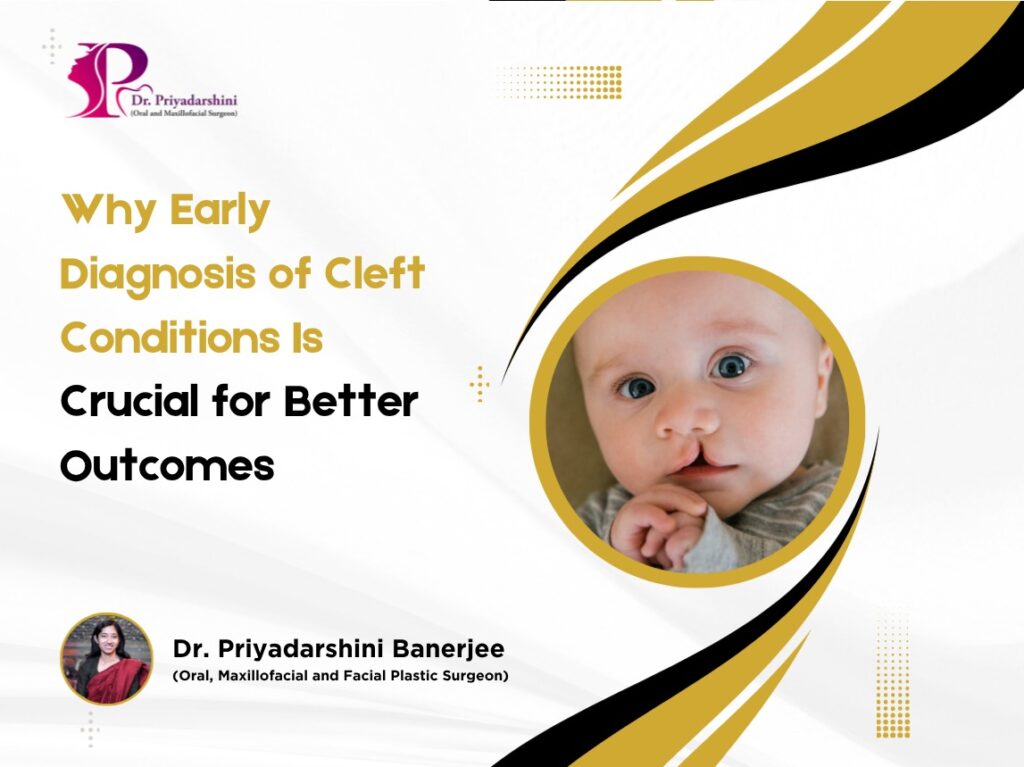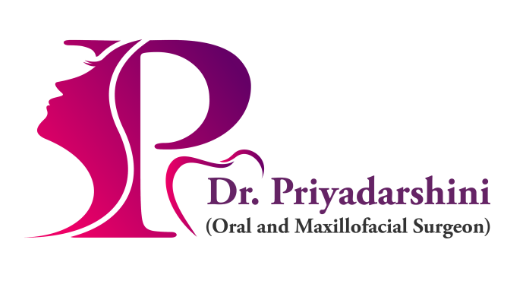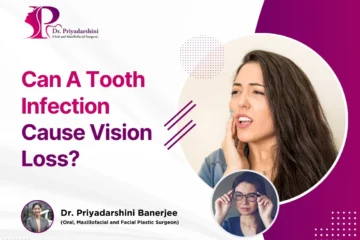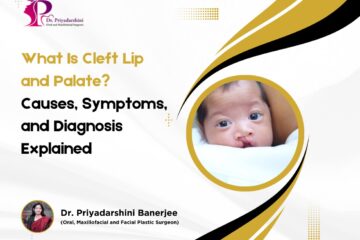Why Early Diagnosis of Cleft Conditions Is Crucial for Better Outcomes
Introduction
Cleft lip and cleft palate are among the most common congenital conditions worldwide. These conditions occur when a baby’s lip or mouth does not form properly during pregnancy. While modern medical treatments can significantly improve outcomes, early diagnosis plays a critical role in ensuring timely intervention, better functionality, and improved quality of life.
In this blog, Dr. Priyadarshini Banerjee explains why identifying cleft conditions early can make all the difference in long-term health and social outcomes.

What Are Cleft Lip and Cleft Palate?
- Cleft Lip: An opening or split in the upper lip that may extend to the nose.
- Cleft Palate: An opening in the roof of the mouth, which can affect both the hard and soft palate.
- These conditions can occur separately or together, and their severity can vary.
Importance of Early Diagnosis
1. Timely Surgical Planning
Early detection helps doctors and families plan corrective surgeries at the right time, usually within the first year of life. Timely surgery not only improves appearance but also ensures better feeding, speech, and breathing outcomes.
2. Better Feeding Management
Babies with cleft palate often face difficulties in sucking and swallowing. Identifying the condition early allows healthcare providers to guide parents on specialized feeding techniques and devices, preventing malnutrition.
3. Speech Development Support
Cleft conditions can affect speech clarity. Early diagnosis ensures that speech therapy can begin at the right stage, helping children develop communication skills more effectively.
4. Prevention of Ear and Hearing Problems
Children with cleft palate are at a higher risk of ear infections and hearing loss. Early monitoring and intervention can prevent long-term complications.
5. Emotional and Social Well-being
Families who receive an early diagnosis can access counseling and support networks, which play a vital role in preparing for treatment and reducing anxiety.
How Are Cleft Conditions Diagnosed Early?
- Prenatal Ultrasound: In many cases, cleft lip can be detected as early as the 18–22 week scan.
- Postnatal Examination: If not visible during pregnancy, cleft palate is diagnosed after birth during a physical examination.
- Specialist Consultation: Pediatricians and craniofacial specialists confirm the diagnosis and plan the treatment pathway.
Benefits of a Multidisciplinary Approach
Early diagnosis enables a team-based approach involving:
- Pediatric surgeons
- Speech therapists
- Nutritionists
- Audiologists
- Psychologists
This ensures that the child receives holistic care for physical, emotional, and social development.
Conclusion
Cleft lip and palate are treatable conditions, but the timing of diagnosis directly impacts the quality of outcomes. With early detection, families can plan for surgery, manage feeding challenges, support speech development, and prevent complications.
As Dr. Priyadarshini Banerjee emphasizes, early intervention not only transforms a child’s health but also gives them the confidence to lead a fulfilling life.
Book an appointment today!
If you have any general or medical enquiry, feel free to contact us.



